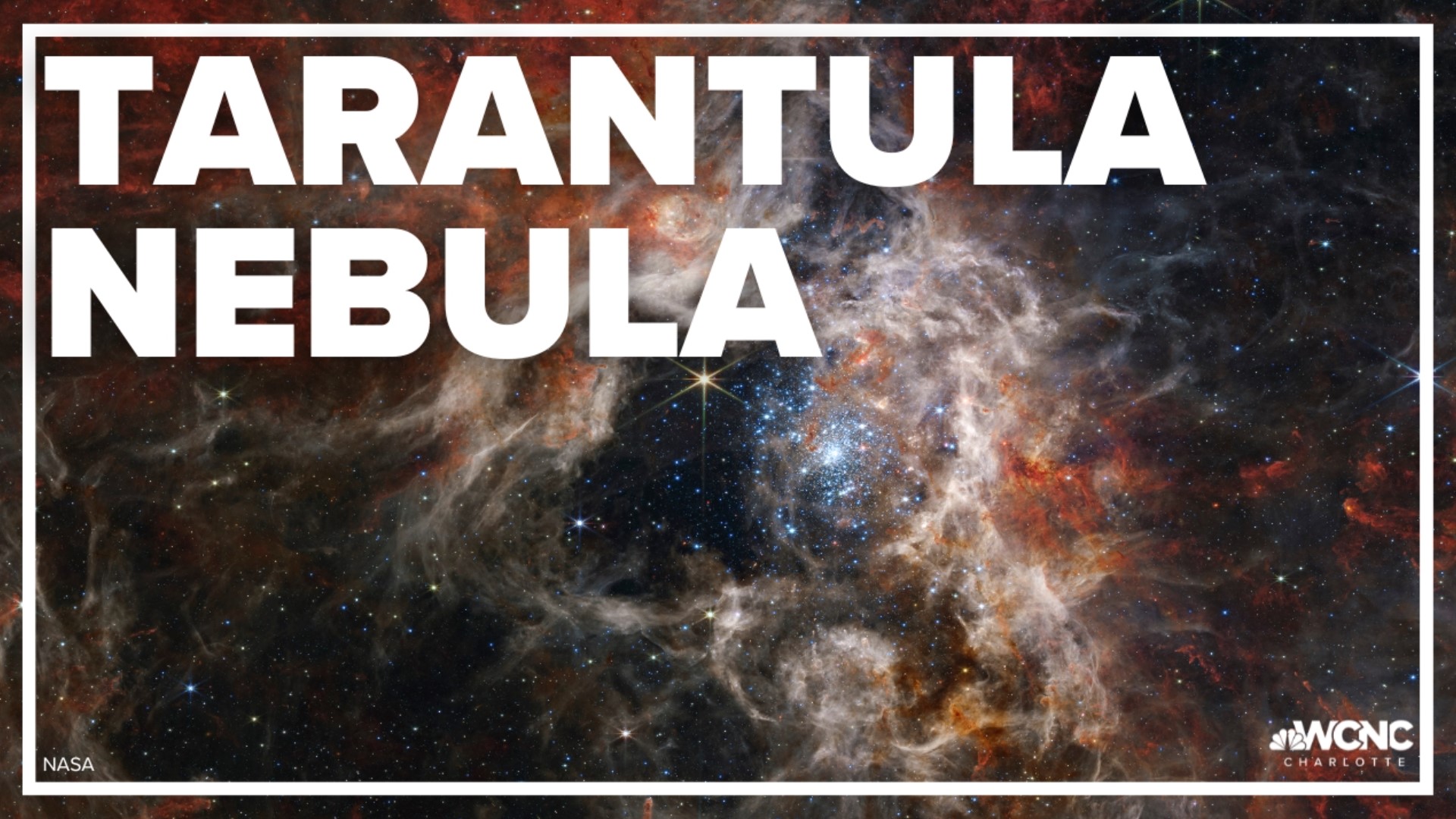HOUSTON — A “cosmic tarantula” are the words astronomers used to describe the latest photo from NASA’s James Webb Space Telescope.
The Tarantula Nebula houses the hottest and most massive stars known to astronomers.
NASA said the incredible detail was picked up by the telescope, showing gas and dust in the nebula as well as distant background galaxies.
This region of space is of major interest to astronomers because its chemical makeup is like that of the broader universe in its infancy, billions of years ago.
Tarantula Nebula
The Tarantula Nebula is officially known as the 30 Doradus but got its nickname because the region “resembles a burrowing tarantula’s home, lined with its silk,” according to NASA.
The image from the Webb Telescope also reveals distant background galaxies, as well as the detailed structure and composition of the nebula’s gas and dust.
The nebula is 161,000 light-years away in the Large Magellanic Cloud galaxy, according to NASA. It is the largest star-forming region in the Local Group, which are the galaxies nearest the Milky Way.
More cosmic beauty shots
The first photos from the powerful $10B telescope came in March with more amazing shots released since July.
Webb's use of the infrared light spectrum allows the telescope to see through the cosmic dust and “see light from faraway light from the corners of the universe,” he said.
“Every image is a new discovery and each will give humanity a view of the humanity that we’ve never seen before,’’ NASA Administrator Bill Nelson said Tuesday, rhapsodizing over images showing “the formation of stars, devouring black holes.”
“We’ve really changed the understanding of our universe,” European Space Agency director general Josef Aschbacher said in July.
.

